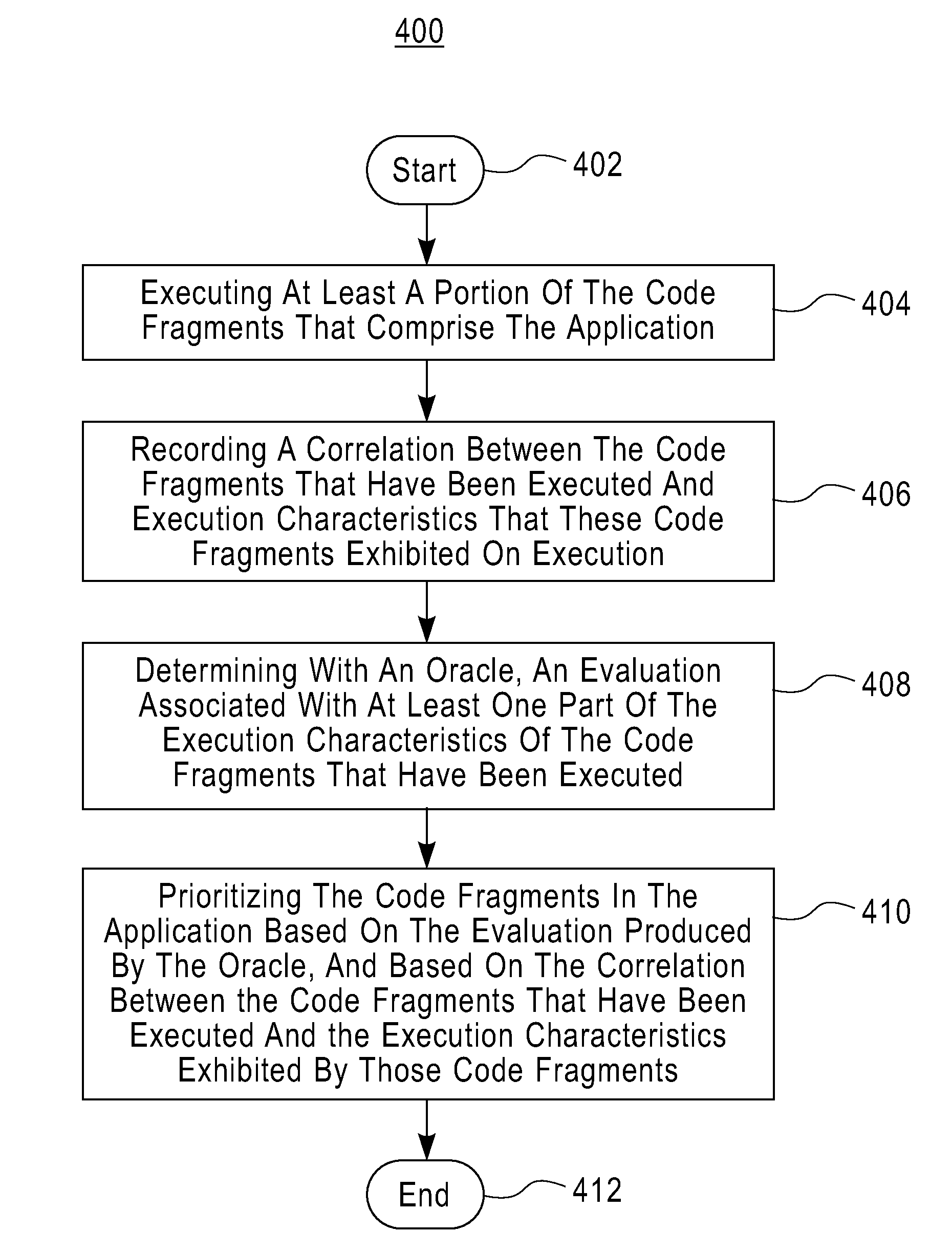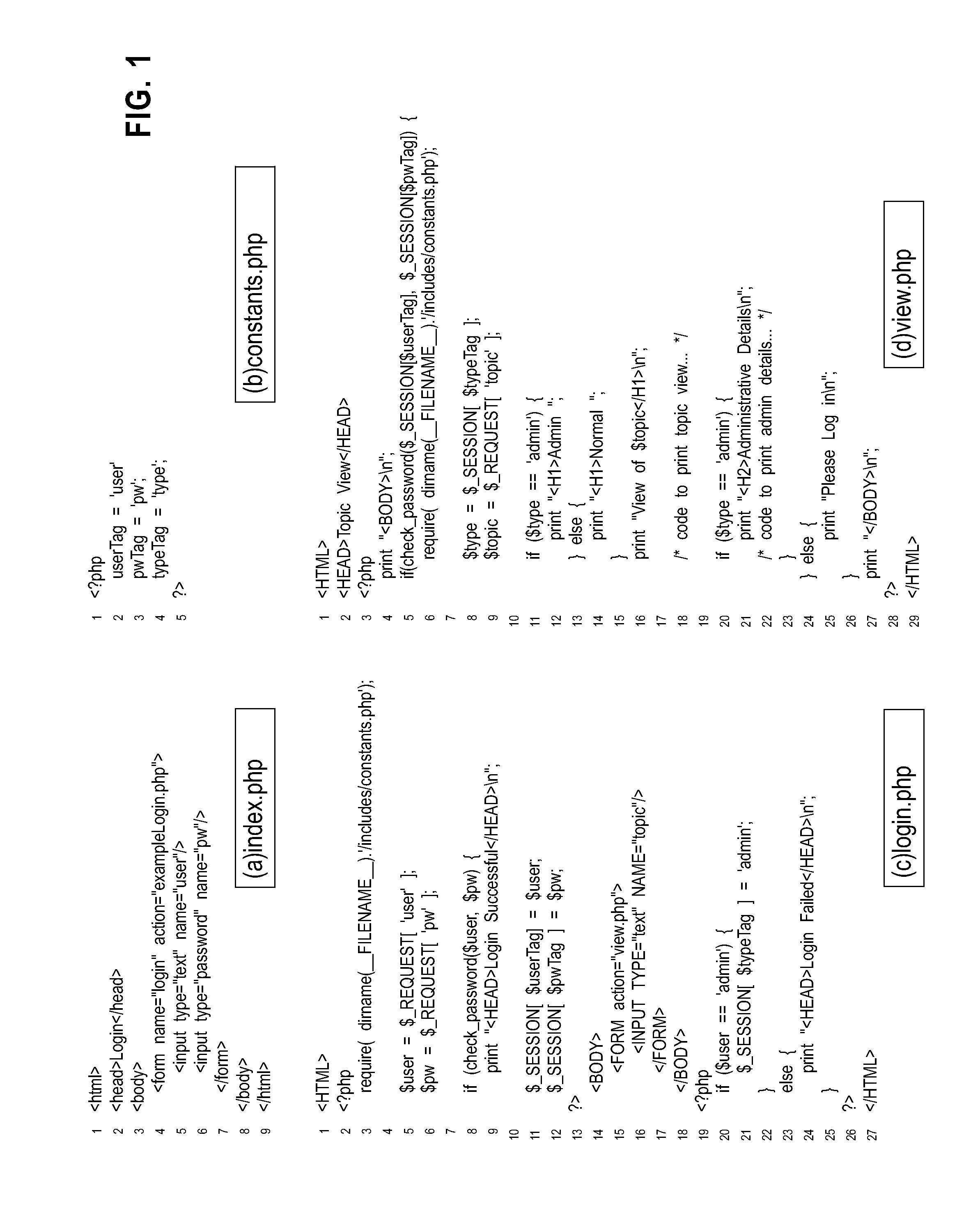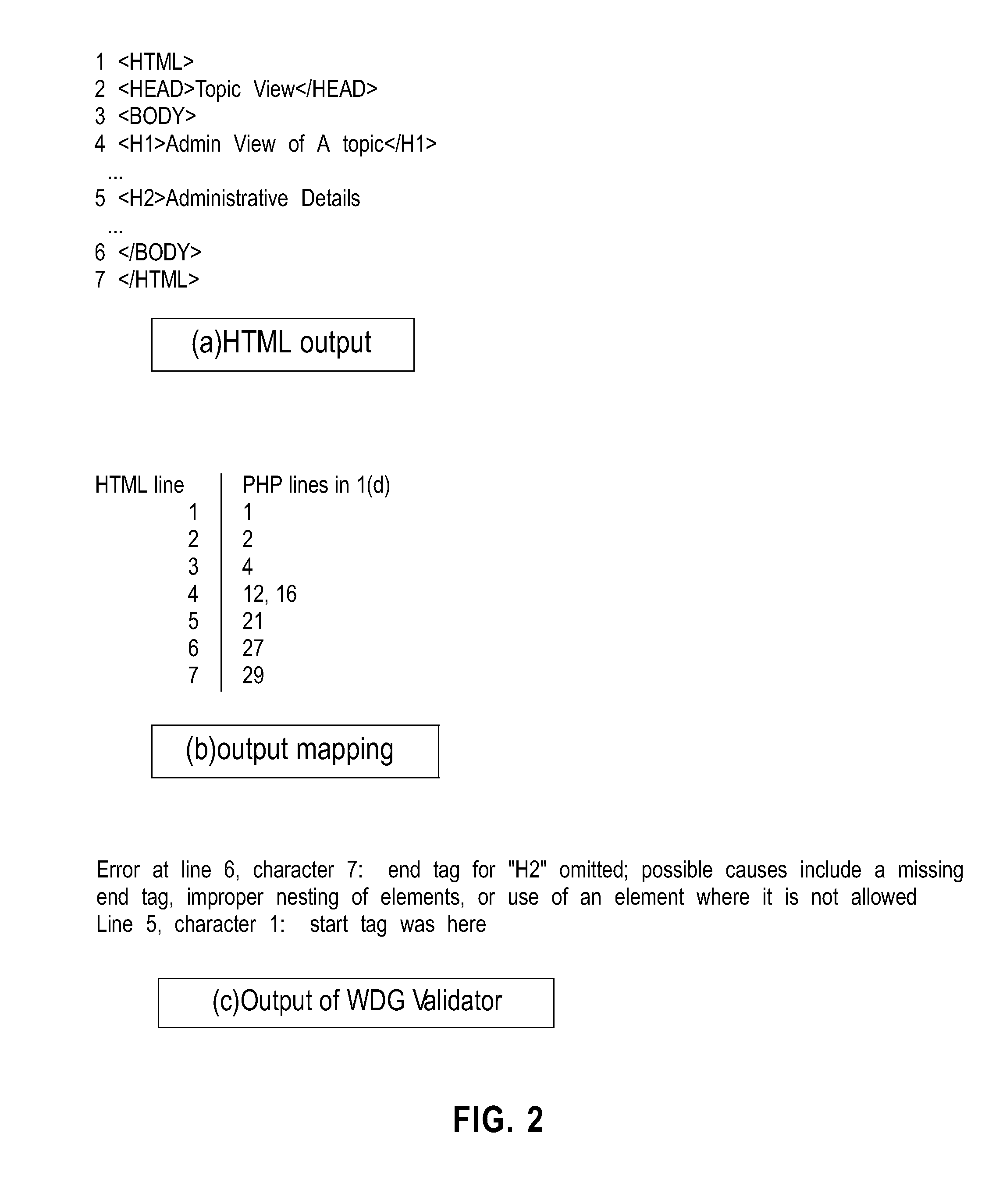Generating additional user inputs for fault detection and localization in dynamic software applications
- Summary
- Abstract
- Description
- Claims
- Application Information
AI Technical Summary
Benefits of technology
Problems solved by technology
Method used
Image
Examples
example
[0095]As described in the section “Example Algorithm”, the test input generation algorithm produced two runs of the script in FIG. 1(d): one that exposed an HTML error and one that did not. FIG. 5 shows the suspiciousness ratings Star(l), Smap(l), and Scomb(l) that are computed for each line l in the PHP script in FIG. 1(d), according to the three fault localization techniques under consideration. The columns of the table show, for each line l, when it is executed (in the passing run, in the failing run, or in both runs), and the suspiciousness ratings Star(l), Smap(l), and Scomb(l).
[0096]To understand how the Tarantula ratings are computed, consider statements that are only executed in the passing run. Such statements obtain a suspiciousness rating of 0 / (1+0)=0.0. By similar reasoning, statements that are only executed in the failing run obtain a suspiciousness rating of 1 / (0+1)=1.0, and statements that are executed in both cases obtain a suspiciousness rating of 1 / (1+1)=0.5.
[0097]...
PUM
 Login to View More
Login to View More Abstract
Description
Claims
Application Information
 Login to View More
Login to View More - R&D
- Intellectual Property
- Life Sciences
- Materials
- Tech Scout
- Unparalleled Data Quality
- Higher Quality Content
- 60% Fewer Hallucinations
Browse by: Latest US Patents, China's latest patents, Technical Efficacy Thesaurus, Application Domain, Technology Topic, Popular Technical Reports.
© 2025 PatSnap. All rights reserved.Legal|Privacy policy|Modern Slavery Act Transparency Statement|Sitemap|About US| Contact US: help@patsnap.com



